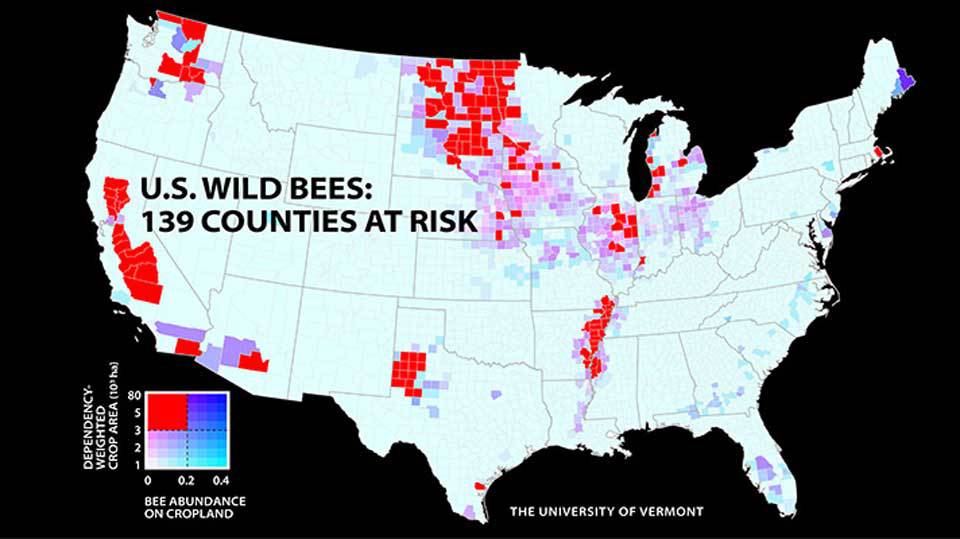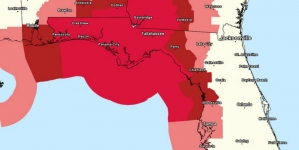-
Tips for becoming a good boxer - November 6, 2020
-
7 expert tips for making your hens night a memorable one - November 6, 2020
-
5 reasons to host your Christmas party on a cruise boat - November 6, 2020
-
What to do when you’re charged with a crime - November 6, 2020
-
Should you get one or multiple dogs? Here’s all you need to know - November 3, 2020
-
A Guide: How to Build Your Very Own Magic Mirror - February 14, 2019
-
Our Top Inspirational Baseball Stars - November 24, 2018
-
Five Tech Tools That Will Help You Turn Your Blog into a Business - November 24, 2018
-
How to Indulge on Vacation without Expanding Your Waist - November 9, 2018
-
5 Strategies for Businesses to Appeal to Today’s Increasingly Mobile-Crazed Customers - November 9, 2018
Wild bee populations dwindle in main US crop regions
Wild bees, crucial pollinators for many crops, are on the decline in some of the main agricultural regions of the United States, according to scientists who produced the first national map of bee populations and identified numerous trouble spots. Main reason is considered to be a trend including conversion of natural habitats of wild bees into farmland for biofuel production. “Our mapped index of bee abundance clearly shows that areas of intense agriculture (e.g. the Midwest Corn Belt and California’s Central Valley) are among the lowest in predicted wild bee abundance”, the authors pointed out.
Advertisement
Ecologist Taylor Ricketts of the University of Vermont in Burlington and colleagues used land-use databases and input from bee experts to create a map of where wild bees were more and less abundant in the United States from 2008 to 2013.
Their decline may prompt greater dependence on commercial honeybee colonies for pollinating crops.
LA Times reported that, But the Central Valley’s love affair with almonds and other orchard crops has left the area with a steep imbalance between wild bee populations and the need for the pollination services they provide, according to a study published online Monday in the journal Proceedings of the National Academy of Sciences.
Given the importance of such insects when it comes to transferring pollen so as to assist seed production, in May 2014 the Obama administration assembled the Pollinator Health Task Force, meant to identify areas suffering pollinator decline.
The report that followed the White House memo called for seven million acres of land to be protected as pollinator habitat over the next five years.
Some of the state’s almond growers have already tried to add wild bees to their pollination plan and restore native vegetation. These counties tend to be places that grow specialty crops – like almonds, blueberries and apples – that are highly dependent on pollinators. The map graphically shows that there has been a sharp drop in the populations of wild bees particularly in some states where crops are grown that rely on bees as pollinators. Other counties affected grow very large amounts of crops that are less dependent on pollinators, including soybeans and cotton.
A bee decline study showed that supply and demand for pollination from bees is “mismatched”.
Advertisement
Wild bees play an important role in pollinating many U.S. crops and plants. Wild bees are disappearing from much of the nation’s farmland – especially in Minnesota and much of the Upper Midwest. However, the study also outlines several regions with greater uncertainty about bee populations. “It could be a glimpse of the future for a lot of crops”, he continued. In the United States, a number of species are in danger of becoming extinct, and there has been a 23 percent decline in the populations of wild bees between 2008-2013 in the contiguous U.S. The article mentions that this decline in “key pollinators could threaten almost 40 percent of U.S. crops”. “Wild bees are precious natural resource we should celebrate and protect. If managed with care, they can help us continue to produce billions of dollars in agricultural income and a wonderful diversity of nutritious food”, Ricketts concluded.




























